
Move forward and back with the arrow keys
Press F to find text within the slide deck

WebRTC is a new front in the long war for an open and unencumbered web
Voice is just another JS application

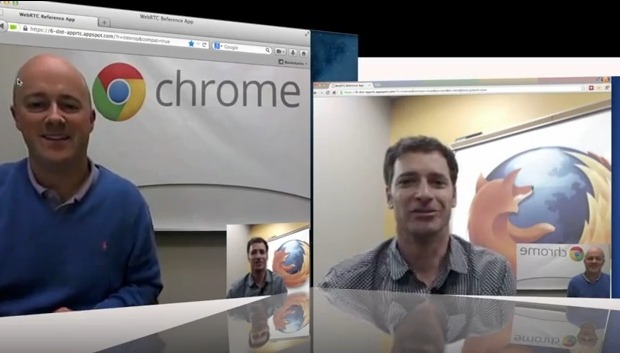

navigator.getUserMedia()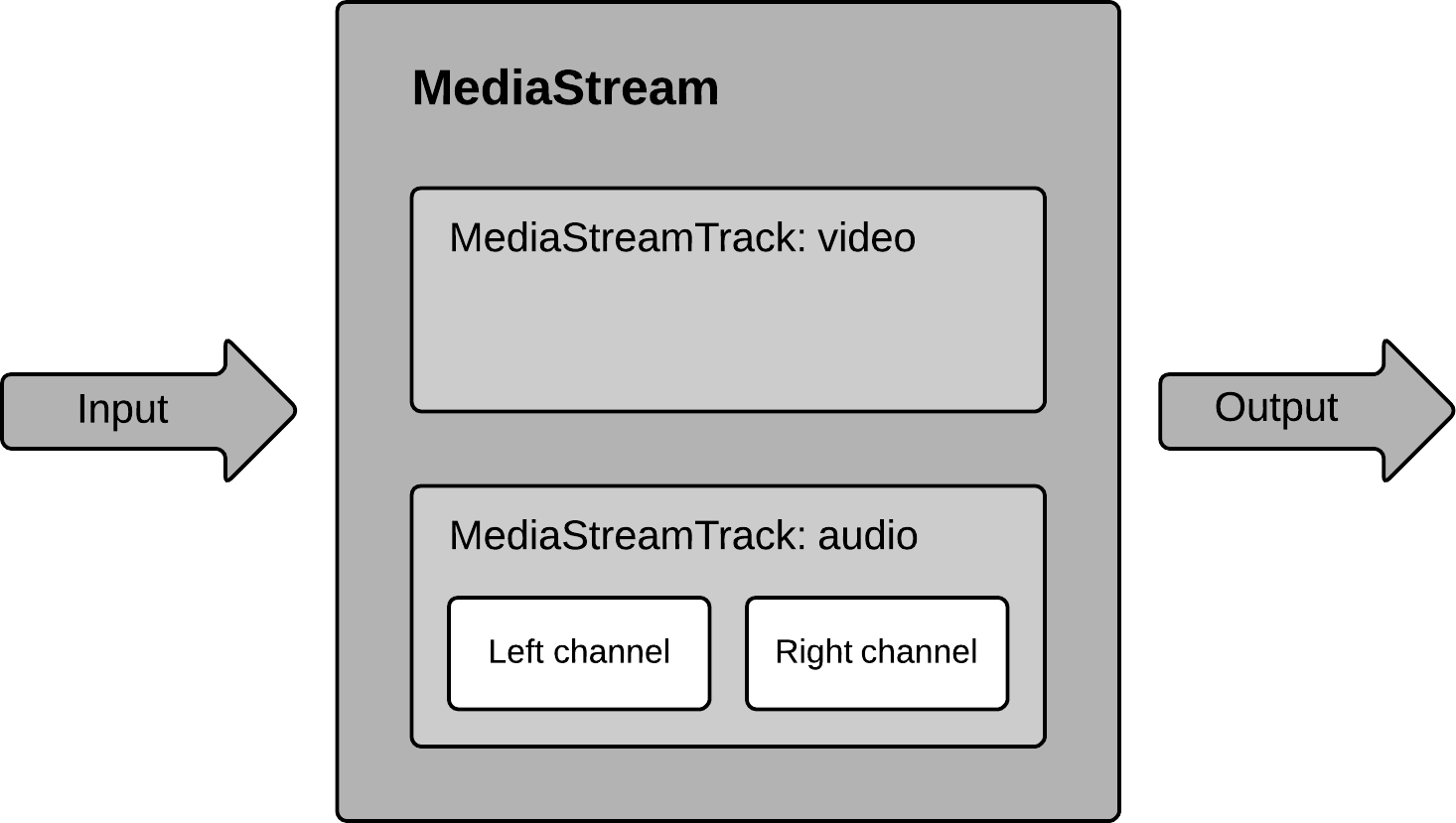
var constraints = {video: true};
function successCallback(stream) {
var video = document.querySelector("video");
video.src = window.URL.createObjectURL(stream);
}
function errorCallback(error) {
console.log("navigator.getUserMedia error: ", error);
}
navigator.getUserMedia(constraints, successCallback, errorCallback);
video: {
mandatory: {
minWidth: 640,
minHeight: 360
},
optional [{
minWidth: 1280,
minHeight: 720
}]
}
// Success callback when requesting audio input stream
function gotStream(stream) {
var audioContext = new webkitAudioContext();
// Create an AudioNode from the stream
var mediaStreamSource = audioContext.createMediaStreamSource(stream);
// Connect it to the destination or any other node for processing!
mediaStreamSource.connect(audioContext.destination);
}
navigator.webkitGetUserMedia({audio:true}, gotStream);
Make sure to enable Web Audio Input in about:flags!
var constraints = {
video: {
mandatory: {
chromeMediaSource: 'screen'
}
}
};
navigator.webkitGetUserMedia(constraints, gotStream);
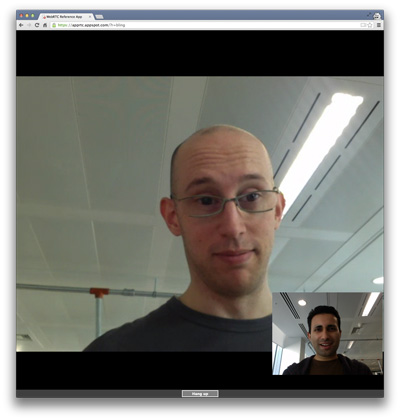
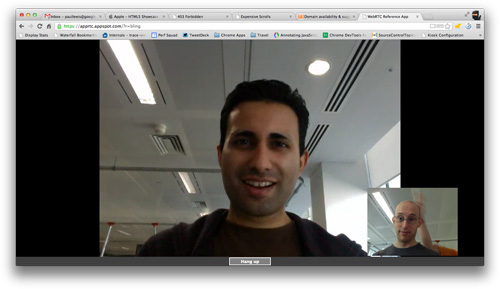
...
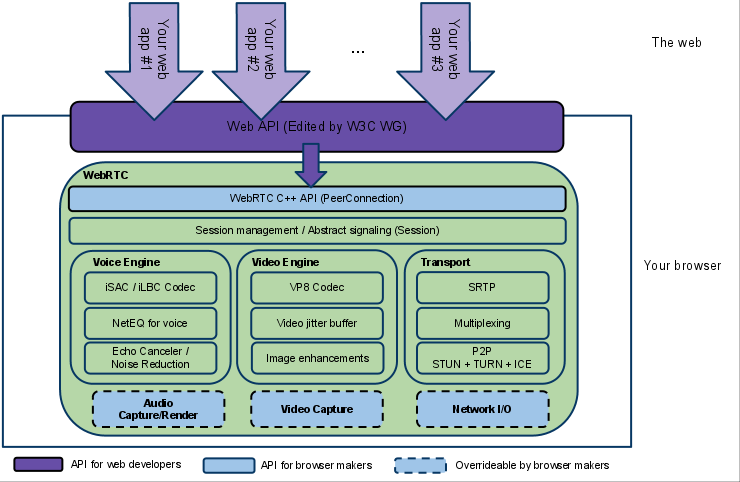
pc = new RTCPeerConnection(null);
pc.onaddstream = gotRemoteStream;
pc.addStream(localStream);
pc.createOffer(gotOffer);
function gotOffer(desc) {
pc.setLocalDescription(desc);
sendOffer(desc);
}
function gotAnswer(desc) {
pc.setRemoteDescription(desc);
}
function gotRemoteStream(e) {
attachMediaStream(remoteVideo, e.stream);
}
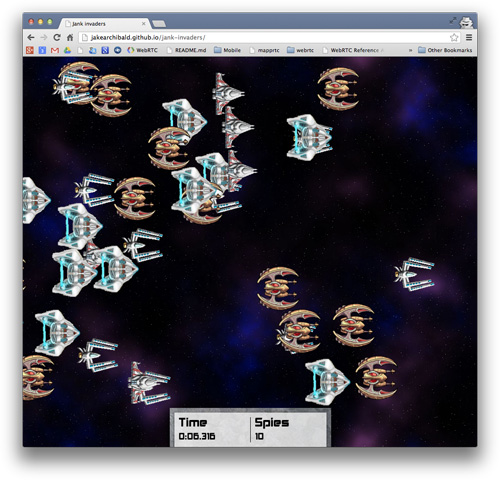
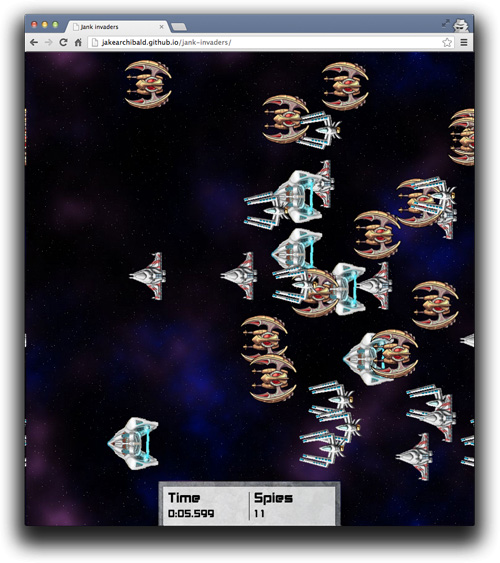
var pc = new webkitRTCPeerConnection(servers,
{optional: [{RtpDataChannels: true}]});
pc.ondatachannel = function(event) {
receiveChannel = event.channel;
receiveChannel.onmessage = function(event){
document.querySelector("div#receive").innerHTML = event.data;
};
};
sendChannel = pc.createDataChannel("sendDataChannel", {reliable: false});
document.querySelector("button#send").onclick = function (){
var data = document.querySelector("textarea#send").value;
sendChannel.send(data);
};
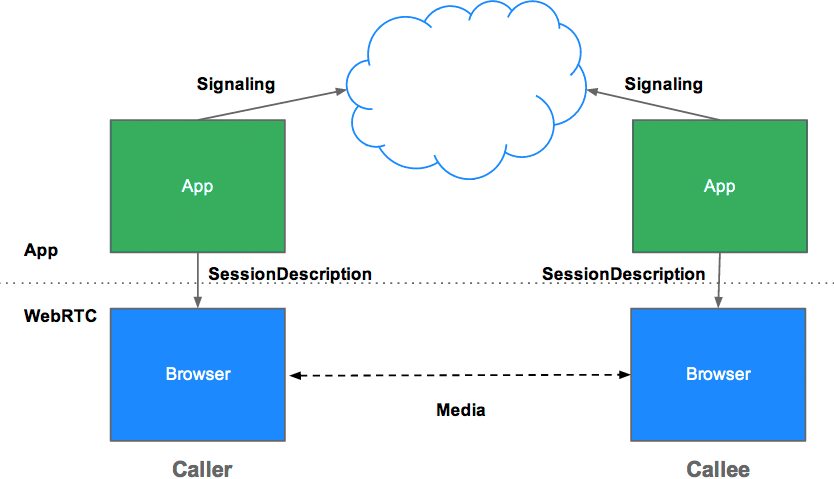
v=0 o=- 7614219274584779017 2 IN IP4 127.0.0.1 s=- t=0 0 a=group:BUNDLE audio video a=msid-semantic: WMS m=audio 1 RTP/SAVPF 111 103 104 0 8 107 106 105 13 126 c=IN IP4 0.0.0.0 a=rtcp:1 IN IP4 0.0.0.0 a=ice-ufrag:W2TGCZw2NZHuwlnf a=ice-pwd:xdQEccP40E+P0L5qTyzDgfmW a=extmap:1 urn:ietf:params:rtp-hdrext:ssrc-audio-level a=mid:audio a=rtcp-mux a=crypto:1 AES_CM_128_HMAC_SHA1_80 inline:9c1AHz27dZ9xPI91YNfSlI67/EMkjHHIHORiClQe a=rtpmap:111 opus/48000/2 ...




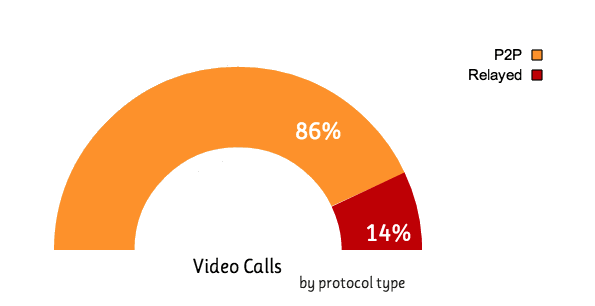





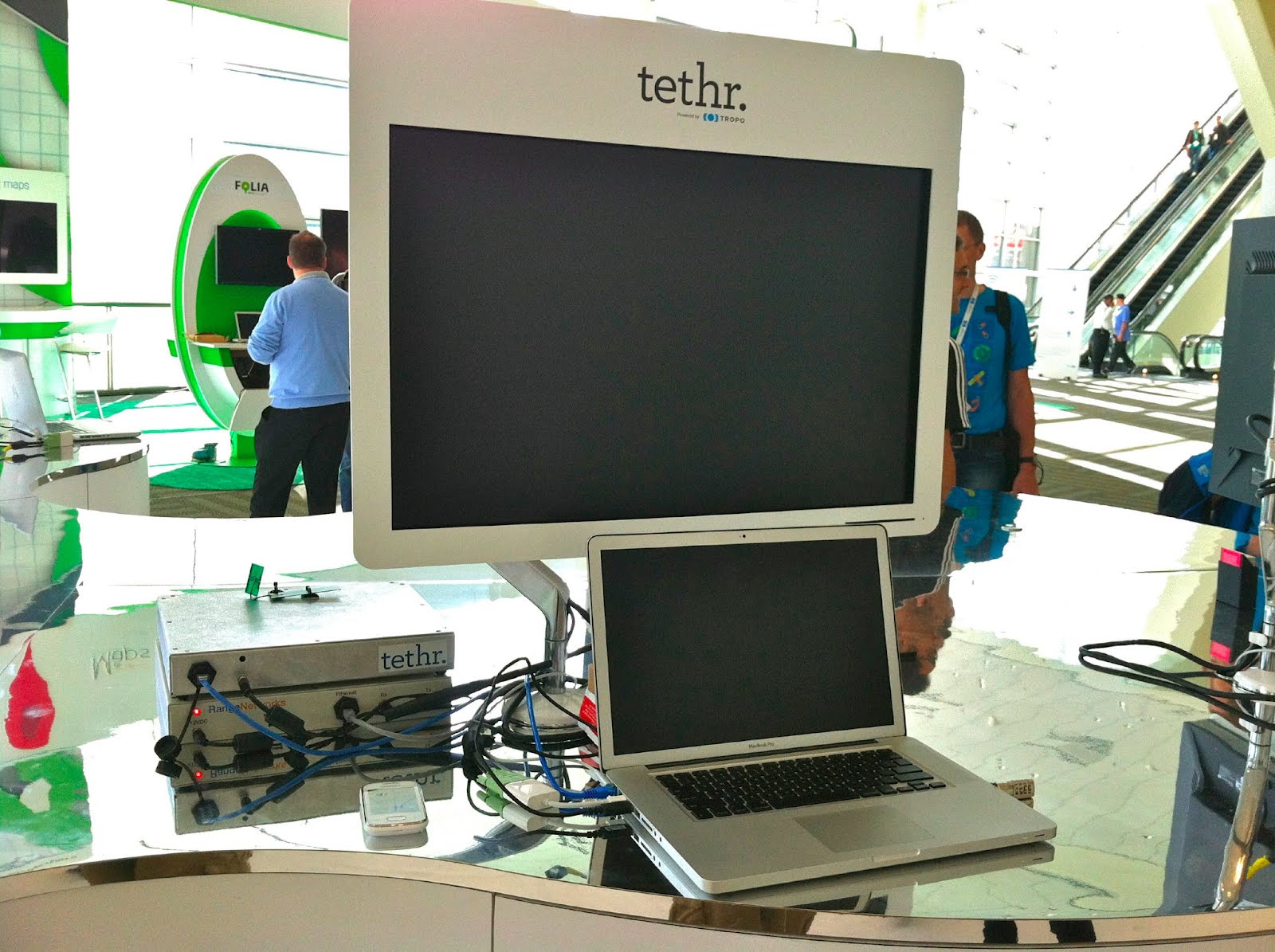
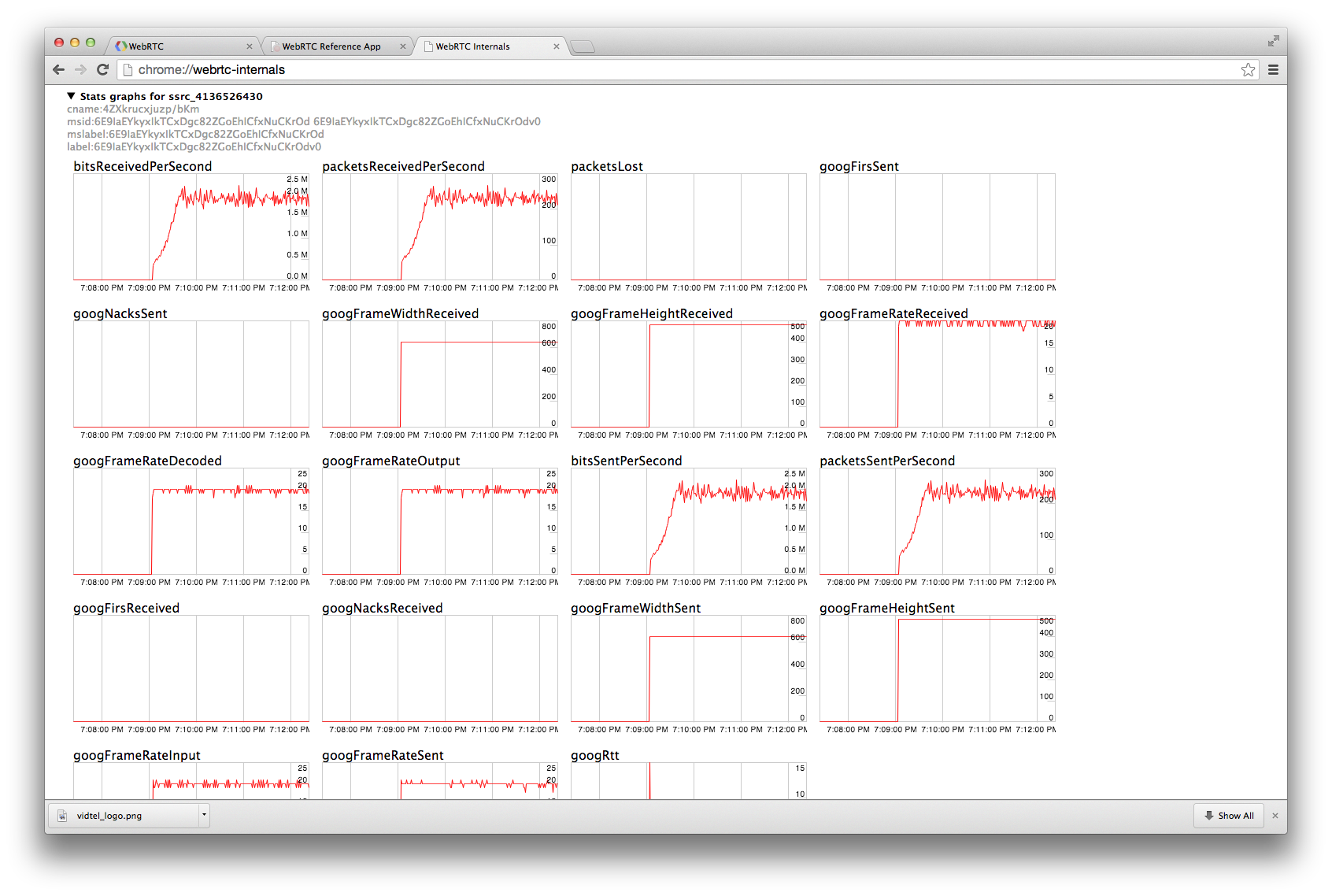
Lets you use the same code in all browsers:
var webrtc = new WebRTC({
localVideoEl: 'localVideo',
remoteVideosEl: 'remoteVideos',
autoRequestMedia: true
});
webrtc.on('readyToCall', function () {
webrtc.joinRoom('My room name');
});
var peer = new Peer('someid', {key: 'apikey'});
peer.on('connection', function(conn) {
conn.on('data', function(data){
// Will print 'hi!'
console.log(data);
});
});
// Connecting peer
var peer = new Peer('anotherid', {key: 'apikey'});
var conn = peer.connect('someid');
conn.on('open', function(){
conn.send('hi!');
});

WebRTC and HTML5 could enable the same transformation for real-time communications that the original browser did for information.
